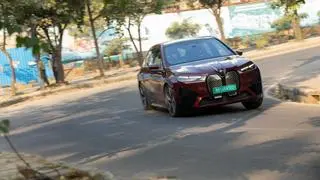Yamaha Motor believes India is “both a challenging and enjoyable market” going by the highlights of its analysts briefing in Japan some days ago.
The issue came up in the context of challenges in emerging markets where India was discussed in the context of a series of recent disruptions. “In the large scale Indian market, we saw significant regulatory changes through the abolition of high denomination banknotes, the sudden changes in emission standards and the standardisation of value-added tax,” stated Yamaha.
This was only part of the story with more challenges in store, especially the Bharat Stage VI emission norms due in 2020. This, added the company, would see an increase in costs thanks to fuel injection technology, which could take over from the conventional carburettor. “However, we believe that we can — building on our development experience in the ASEAN region — respond to these changes. It is both a challenging and an enjoyable market,” said Yamaha.
Challenging marketBeyond this, India is a hugely critical market for the company by virtue of its sheer size and potential. Yamaha’s market share is little to write home about as it has to reckon with the might of fellow Japanese rival, Honda, as well as strongly established local players such as Hero, TVS and Bajaj. Yet, it believes that this is a market where it needs to build its base slowly while clawing its way to increasing market share.
In addition, India is vital from the viewpoint of sourcing components for its other global operations. Like other automakers, Yamaha has to constantly grapple with challenges of costs and this is where established ancillary suppliers in India can help out in this task. Further, building economies of scale as in the case of the recently commissioned Chennai plant will be another step in this direction.
The bigger challenge on hand is the move to BS VI as Yamaha articulated at its recent analysts meeting in Japan. This is true for other two-wheeler makers too, which have to work, especially hard at keeping costs in check especially in a price-sensitive market like India. As a global player with established competencies, Yamaha should not have a problem rising to the challenge but balancing this with a competitive cost structure will be the bigger task on hand.
Honda has already gone on record to say that it is more than ready for the challenge even while hinting that this is where it can actually prove a point as the Number 1 player in India. Since the time it parted ways with Hero six years ago, it has been on a relentless growth spree but still has not been able to catch up with its former ally.
Honda now hopes that the new BS VI regime will help it in this endeavour at least to show Indian customers what its prowess is all about. Likewise, Yamaha will be keen on making a strong statement as it leverages its global competencies in reaching the BS VI goalpost. It will be interesting to see how the commuter segment is impacted with prices set to rise from April 2020.
This period could also see India emerging as Yamaha’s top market even while its current favourite, Indonesia, is slowly gaining traction all over again. In fact, the analyst meeting in Japan reaffirmed that some markets in ASEAN were getting back on track after a pretty long lull. Vietnam is yet another important centre for Yamaha even while Thailand and Taiwan have not been showing any dramatic growth lately.
India is, of course, showing the fastest growth and its two-wheeler production in 2020 could be around 22 million units even while there will be the predictable headwinds associated with the BS VI regime.
It is only natural that customers will resist the higher price tags for a while before the momentum is in place all over again post-2020.
From Yamaha’s point of view, BS VI will also catapult India’s global responsibilities as the competencies gained here will be used to meet the needs of other markets in ASEAN, Japan and the West, which will inevitably move towards similar emission norms. To that extent, its R&D base here is expected to grow rapidly in the coming years to meet future challenges.








Comments
Comments have to be in English, and in full sentences. They cannot be abusive or personal. Please abide by our community guidelines for posting your comments.
We have migrated to a new commenting platform. If you are already a registered user of TheHindu Businessline and logged in, you may continue to engage with our articles. If you do not have an account please register and login to post comments. Users can access their older comments by logging into their accounts on Vuukle.